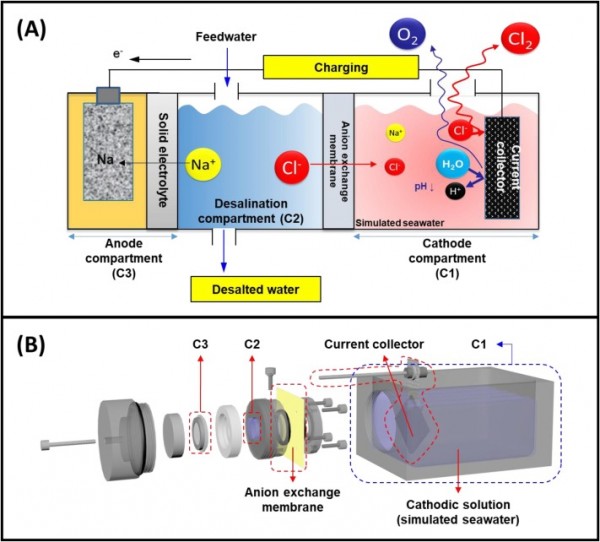Energy projection of the seawater battery desalination system using the reverse osmosis system analysis model
- Journal
- Chemical Engineering Journal
- Vol
- 395
- Page
- 12508
- Year
- 2020
Water-stressed countries have been shifting their sources of clean water from inland freshwater to seawater. This led to a comprehensive exploration of seawater desalination processes to address water scarcity; however, membrane processes have expensive operational costs and high energy consumption. In this regard, this study presented a novel energy self-sufficient desalination system design that incorporates rechargeable seawater batteries as an additional energy storage system. Experimental data were projected using the reverse osmosis system analysis model to determine the configuration that achieved the lowest energy consumption and highest charging rate. The results show that the seawater battery achieved a satisfactory desalination performance with >90% and 74%−82% removal of sodium and chloride ions from actual water samples, respectively. Among the configurations, using ultrafiltration as pretreatment and applying 1.8 mA as initial current yielded the lowest energy consumption (1.35 kWh/m3) and the highest energy charging rate (1.01). Compared to the conventional reverse osmosis desalination plants (2.83 kWh/m3), the seawater battery-desalination system has a huge potential in addressing the major disadvantages of current desalination technologies.

